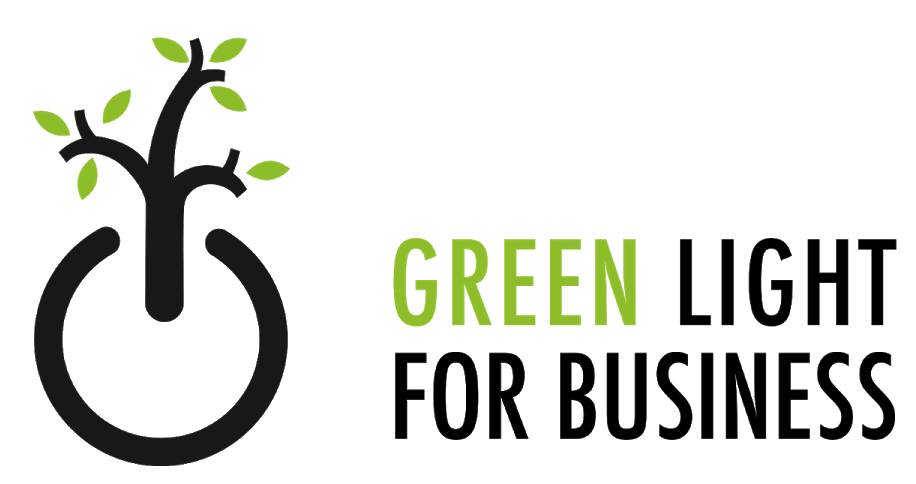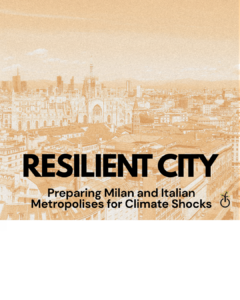In everyone’s mind, the words “Sustainable” and “Dubai” do not often mix. When we think about Dubai, we picture a supersized world with indoor skiing and towers that keep getting higher and higher. Most importantly, Dubai is often characterized by an over-consumption of resources and an over-pollution of the city. Indeed, in 2006, the United Arab Emirates was declared to be the country with the largest ecological footprint per resident by the World Wildlife Fund.
However, since the mid-2000s, the leader of Dubai, Sheikh Mohammed bin Rashid Al Maktoum has launched the Dubai Clean Energy Strategy 2050 and declared that the city would get “75 percent of its energy from clean sources by 2050” to achieve the smallest carbon footprint in the world. Since then, some sustainable initiatives have arisen in different fields from different actors.
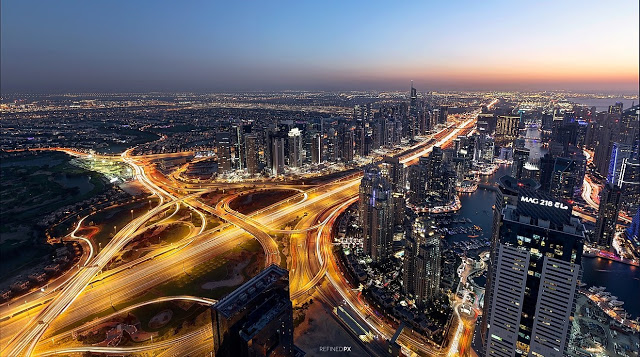
Sheikh Zayed Road. Image credits: Zuhai Lokhandwala
Green Building with the Dubai Sustainable City
Built in 2018 by Diamond Developers, a Dubai-based company, the Sustainable City seems like one of the most impressive technical and ecological achievements in Dubai. It aims to become the first Net Zero energy development community of the Middle East.
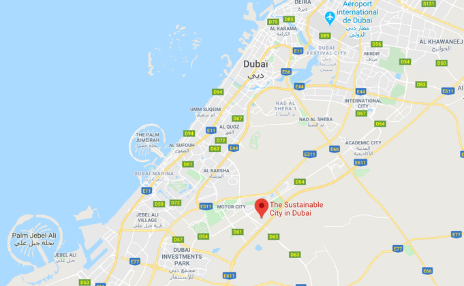
Sustainable City location in Dubai
Even though this goal is not yet reached, in the Sustainable City, only three metric tons of carbon dioxide is emitted per year per person, which is more than two times less the world average and five times less the United-States. But truly, what drives this particular city to have such low carbon emissions?
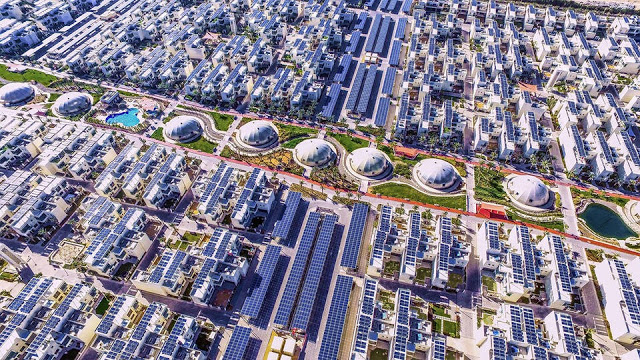
Sustainable City overview – Image credit : pisonpr.com
A solar-based energy production system appears to fuel the whole city’s activities. Indeed, one of the main challenges of sustainable building in an arid climate is the carbon emissions that result from a high consumption of air conditioning. To counteract the negative effects of the sun, the city is built with innovative materials and techniques. For instance, the UV reflecting paint used on the houses of the city helps to reduce heat gain so that individuals don’t have to consume even more air conditioning. The windows and roofs also help to keep the fresh air inside. Moreover, every home is facing north to benefit from the shade.

Greenhouse illustration
Credits: Golf Sotheby’s International RealtyMore generally, the Sustainable City is run thanks to the energy generated by the 40,000 solar panels installed. Most of the solar panels are set up in a smart and aesthetic way. They are located on the top of houses and car parks as shade.
Solar energy is also used for agriculture and water treatment purposes. Eleven greenhouses run by solar energy provide vegetables. The greenhouses are the result of the use of desert technology. To keep the inside of the greenhouses cooler than the outside, a sustainable air conditioning system is based on fans fueled by solar energy and cooling pads.
Incentive policy
To sustain this project in the long term, the Sustainable City wants people to make a soft transition to an eco-friendlier lifestyle. Therefore, more and more incentives are set up to make this lifestyle more attractive to a broader public.
For every purchase of an electric car, the city will offer a cash subsidy of 10,000€, as well as the facilities to take care of it.
In addition, the absence of service or maintenance fees for homeowners generates an increased demand for the Sustainable City’s real estate market compared to Dubai. Rents in the Sustainable City are, on average, no more expensive than in the rest of Dubai. To rent a 4-bedroom villa will cost you around 50,000€/year, which is the same price as in a residential area nearby called Arabian Ranches and half that of a villa on the Palm Jumeriah.
Managing Dubai’s e-waste
Besides the Sustainable City initiative, Dubai has also implemented e-waste management measures. In the last decade, megacities such as Dubai faced the issue of waste management. Today, due to population growth, the development of the tech industry, and the subsequent increase of disposable income, the UAE region is the biggest producer of e-waste in the Middle East.
E-waste management in Dubai is a pressing topic, as can be seen from the numbers. Every year, each resident generates, on average, 17,2 kg of e-waste, which contains batteries, computers, mobile phones, air conditioners, etc. Most of this e-waste is not properly recycled and harms people’s health because of the harmful toxins released in the soil, water, and atmosphere.
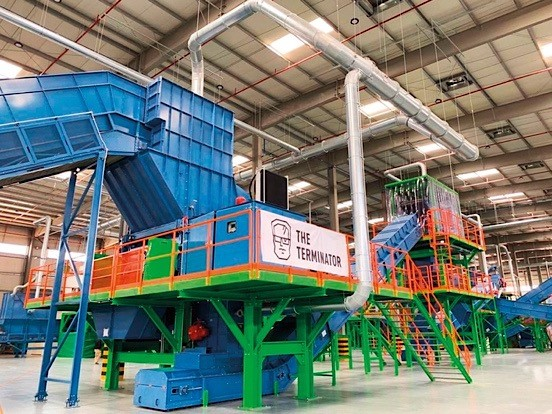
The Recycle Hub in Dubai’s Industrial Park
The city of Dubai has decided to launch initiatives with private firms to fix this e-waste issue, which places Dubai as a trendsetter in e-waste management in comparison to the rest of the world.
First of all, every year since 2017, Averda (leading waste management company) and Uber team up on the Environment Day to pick up the e-waste of inhabitants of Dubai. In 2018, they collected around 1 ton of e-waste in only one day. As Averda UAE’s Market Manager said: “We are always looking for engaging ways to connect with the communities we serve and raise awareness about critical environmental issues”. However, we can wonder why this action only happens for one day!
The example of a sustainability-driven restaurant, Maison Mathis :
More recently, in 2019, a more viable business model was founded. Enviroserve, a private leading e-waste management company inaugurated The Recycle Hub, the world’s largest e-waste recycling facility. The project represents one of the largest foreign direct investments as the Swiss Government Export Finance Agency backed the project. Dubai is proving the fact that technological innovation and sustainability can operate together.

Vertical Farm in Maison Mathis Moving on to a smaller scale project yet just as effective to convey the idea that a sustainable future is possible. Maison Mathis is the perfect example of individuals wanting to make a change for the environment. This neighborhood restaurant reopened a year ago with some new eco-friendly initiatives.
From now on, the restaurant aims at having a positive impact on the environment. Maison Mathis participates in the “reduce, recycle, reuse” movement by improving their waste management practices and limiting single-use plastic. The restaurant wants to “be self-sufficient, promote food integrity and the consumption of ethical and local produce.”
Dubai, a hybrid ecological transition…
All these projects are just a drop in the ocean of Dubai’s 2050 plan for a clean and sustainable city – many more are in the works, including the Solar Park with an expected production of 5,000 megawatts by 2030.
Still, from these few initiatives we have explored together, it seems that Dubai has successfully adopted a hybrid strategy by building an innovation ecosystem, gathering both private and public initiatives and players.
Below I linked you some resources to further reserach the initiatives Dubai is taking. What is your city doing to become more sustainable? Let us know on our social media and feel free to share this article if you liked it.
An overview of Dubai’s Solar Park initiative:
https://www.emirates247.com/news/emirates/renewable-energy-shaping-the-future-of-sustainability-2020-01-05-1.691242
Shifting to a sustainable transport system in Dubai:
https://www.thetrypticnote.com/single-post/2019/06/30/Shifting-to-a-sustainable-transport-system-in-Dubai
The World’s Most Improbable Green City
https://www.nationalgeographic.com/environment/urban-expeditions/green-buildings/dubai-ecological-footprint-sustainable-urban-city/
